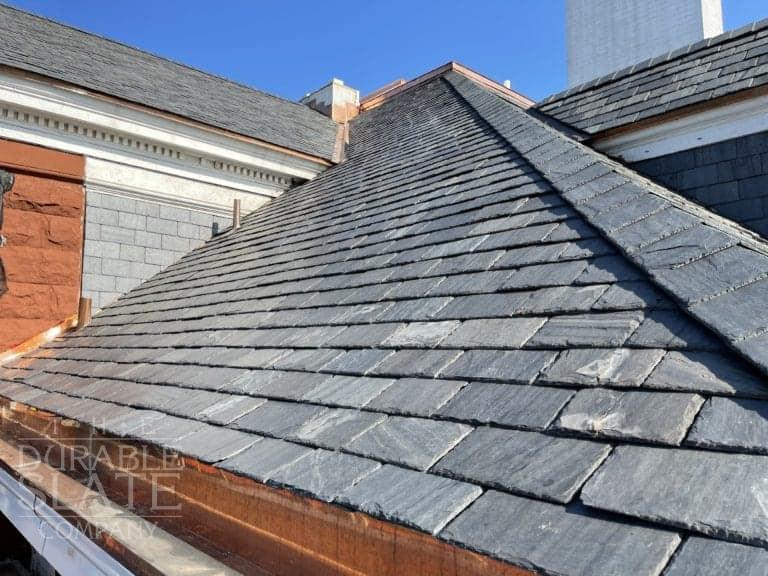Important Inquiries to Ask Gainesville Roofing Companies Prior To Hiring
Important Inquiries to Ask Gainesville Roofing Companies Prior To Hiring
Blog Article
Finest Practices for Ensuring Correct Roof Covering Ventilation
Ensuring proper roof covering air flow is vital for the long life and effectiveness of a roof covering system. A balanced consumption and exhaust air vent proportion, generally 1:300, plays a critical role, with consumption vents ideally positioned at the lower side of the roof for amazing air entry and exhaust vents at the top for warm air departure. Routine examinations to determine blockages and keep clear air flow are paramount. Keeping insulation away from vents is essential to protect against air flow constraint. Understanding these foundational aspects sets the phase for more thorough insights right into installation and maintenance techniques that can dramatically boost your roofing system's efficiency.
Understand Ventilation Basics
Effectively recognizing air flow essentials is vital for making sure the longevity and effectiveness of roof systems. Effective air flow reduces wetness buildup and temperature extremes in the attic room, both of which can cause substantial structural damages over time. A well-ventilated roof helps in protecting against usual issues such as mold development, timber rot, and ice dams, which can endanger the honesty of the roof materials and the underlying frameworks.
The primary goal of air flow is to promote the motion of air, allowing for a regular exchange between the indoor and outside atmospheres. This balance is attained with a mix of consumption and exhaust vents that work together to preserve optimal air movement. Intake vents, normally located along the soffits or eaves, permit fresh air to enter the attic area, while exhaust vents, usually located at or near the roofing system ridge, allow hot, humid air to escape.
Trick elements affecting the efficiency of roof ventilation include proper positioning, appropriate sizing, and ensuring that both consumption and exhaust vents are unhampered. Regular evaluation and maintenance are critical to identify possible obstructions, damage, or ineffectiveness in the ventilation system, therefore safeguarding the roofing system's efficiency and longevity.
Types of Roof Covering Vents
Roofing vents play a critical role in preserving effective attic room ventilation and, by extension, the overall health and wellness of the roof. Numerous kinds of roofing vents are available, each with unique benefits customized to specific roof requirements. Ridge vents, for instance, are installed along the roofing system's optimal, allowing warm, damp air to escape from the attic room. They supply constant air flow and blend seamlessly with the roofline, making them both effective and visually pleasing.

Soffit vents are mounted under the eaves and job in tandem with roofing system vents to make sure a well balanced consumption and exhaust system. By allowing cooler air to enter from below, soffit vents promote the expulsion of hot air via top vents. Gable vents, situated on the exterior wall surfaces of the attic room, deal one more efficient remedy, particularly in homes with saddleback roofs.
Evaluate Your Present Ventilation

Next, consider the age and problem of your roof materials and ventilation elements. Older systems may not follow current building ordinance or might have deteriorated gradually, reducing their effectiveness. Conduct a thorough exam to identify any type of signs of deterioration, such as rust, damages, or voids that might jeopardize the system's performance.
Furthermore, determine the attic room temperature and moisture levels. Heats and humidity can indicate poor air flow - roofing companies in gainesville florida. Make use of a hygrometer and thermometer to get exact readings, contrasting them with outside problems. Persistent disparities recommend potential concerns that require attending to.
Installation Best Practices
Reliable installment of roofing air flow systems is vital for making certain optimal performance and longevity. Correct installation begins with recognizing the details air flow requirements of the roof and the structure it covers. This includes determining the correct ratio of consumption to wear down vents, normally adhering to the 1:300 rule, which specifies one square foot of ventilation for each 300 square feet of attic flooring space.

Consumption vents must be set up at the roofing's reduced side, typically in the soffits, to enable cool air to go into. Exhaust vents, on the various other hand, must be set up near or at the roofing's top to promote the departure of cozy, wet air.
Seal all vent connections diligently to avoid air leakages and potential water seepage. Usage premium materials and follow supplier guidelines to guarantee resilience and efficiency. Furthermore, integrating ridge vents with baffles can considerably improve air flow performance by preventing wind-driven rainfall and snow from getting in the attic room.
Inevitably, precise setup of roofing ventilation systems reduces possible concerns such as mold and mildew growth, ice dams, and architectural damage, ensuring the roof covering's integrity and the structure's see this overall health.
Regular Upkeep Tips
Consistency in maintenance practices is basic to making certain the long-lasting efficiency of roofing air flow systems. Routine assessments are crucial, preferably carried out biannually-- in the springtime and fall. Throughout these examinations, ensure that vents are without debris, nests, and other blockages that might restrain air flow. Check for any kind of signs of dampness buildup or mold, as these can suggest incorrect air flow or leakages (roofing companies gainesville florida).
Cleaning up the vents is another essential task. Use a soft brush or a vacuum cleaner to eliminate dirt and debris from intake and exhaust vents. Be careful not to harm the vent displays or louvers during the process. In addition, examine the attic room space for any kind of signs of water damages, which can jeopardize the honesty of the roof.
Correct insulation is equally crucial. Ensure that attic room insulation does not obstruct the vents, as this can severely restrict air movement. Rearrange or change it to preserve an effective barrier. if any type of insulation has actually moved or worked out.
Last but not least, change any kind of damaged or missing out on parts promptly. Busted vents, split tiles, or deteriorated flashing can all add to inadequate ventilation and should be resolved without hold-up. Routine maintenance guarantees that the roof ventilation system functions ideally, thereby prolonging the life expectancy of the roof itself.
Conclusion
Making certain appropriate roof covering ventilation is vital for preserving the efficiency and toughness of a roof system. Adherence to the 1:300 consumption and exhaust vent ratio, paired with the original source the tactical placement of vents, is necessary.
A balanced intake and exhaust vent proportion, typically 1:300, plays an essential function, with intake vents preferably positioned at the lower side of the roof covering for great air access and exhaust vents at the top for warm air exit. Intake vents, normally situated along the soffits or eaves, permit fresh air to enter the attic area, while exhaust vents, usually located at or near the roof covering ridge, web enable hot, humid air to get away.
Soffit vents are mounted under the eaves and job in tandem with roofing vents to make certain a balanced consumption and exhaust system. By enabling cooler air to get in from below, soffit vents facilitate the expulsion of hot air through upper vents. Adherence to the 1:300 consumption and exhaust air vent ratio, paired with the calculated positioning of vents, is necessary.
Report this page